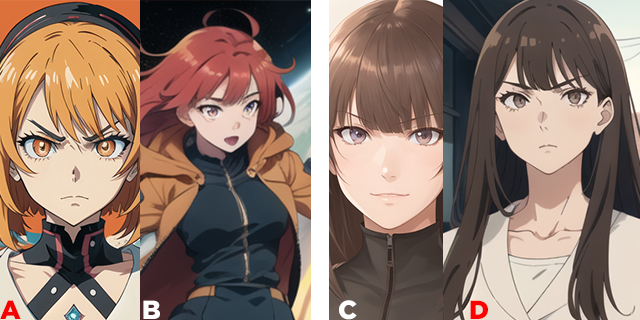
PODCAST: Why does Anime AI look like the “Same face girl”? – (Audio summary of the written post)
ARTICLE:
Anime enthusiasts and Stable Diffusion training artists alike have raised concerns about the prevalence of biases in Stable Diffusion (SD) anime models. The crux of the issue lies in the skewed representation of characters, with a whopping 90% of SD-trained models consistently generating images of “only young girl faces.”
Even more worrying is the negative embedding problem, where attempts to prevent errors in image generation inadvertently perpetuate the same childlike biases. To compound this issue, even realistic models intended for diverse characters get derailed when prompted with anime-style keywords, producing unintended results.
Problems:
- Biased Character Representation: Around 90% of AI SD-trained anime models consistently generate images of “small girls,” skewing character representation.
- Negative Embedding Bias: Attempts to prevent errors in image generation inadvertently reinforce childlike biases due to negative embedding techniques.
- Anime-Style Keyword Derailment: Even realistic models aimed at diverse characters can produce unintended results when prompted with anime-style keywords, undermining the intended output.

In this picture, by using the keyword ((age Xx)) we aimed to get results for an older-looking woman in an anime style. But only certain ai stable diffusion models were able to represent this accurately even with negative words like “small child, small girl, little girl face”.
The most biased keyword which generates problems with the anime style is probably “CELL SHADING”, ironically. The word “shading” has been biased in a general Stable diffusion model with “soft colors”. You may add “Soft colors” in your negative embedding to avoid this, but oh surprise! -You get even more soft shading colors instead of “flat colors”. Again, this is a double-trouble context. This is bad.
Solutions:
- Tagging for Diversity: Train your SD models using diverse tags, encompassing a range of age categories such as “Mature,” “Adult,” and “Woman” to counteract biased character output.
- Age-Specific Keywords: Leverage platforms like Midjourney or Niji journey by using descriptive keywords like “((24age)), woman” to generate older women characters more effectively.
- Personalized Image Folders: Create custom Regularization Image Folders (RIF) with properly tagged images to tailor output and reduce bias in AI-generated content.
- Prioritize Model Quality: Remember, precise prompts can’t fix biases stemming from poorly tagged or trained models. Focus on creating well-trained models for more accurate results.
Prompt words like “flat colors”, “anime”, and “screencap” have very strong biases in 90% of the stable diffusion anime models, this is because of the way tags have been embedded from the legacy data the model came from using anime faces that looked the same.
Poor description images, or RIF consisting of thousands of child-like anime will cause “same face” problems in Stable Diffusion. The SD anime community may collaborate closely to standardize the correct use of tags for older-looking characters and this would be a huge advancement in regards to data training now that the SD XL model is finally here.
Embracing these solutions and staying informed about evolving AI advancements can help you create more custom and consistent ORIGINAL characters.
Share with us what kind of other problems/solutions you’ve found when training anime data into your Stable Diffusion models in the comment section below.
-Pierre

